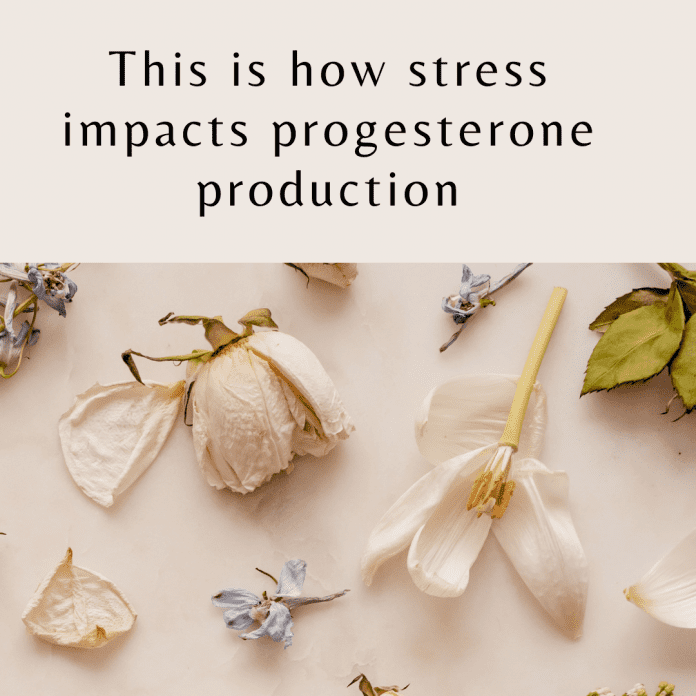How is progesterone produced?
Progesterone is primarily made in the ovaries and a small amount is secreted by the adrenal glands. Progesterone is actually made from cholesterol which is the building block of all our steroid hormones. Cholesterol is then broken down to pregnenolone and then forms progesterone. This is part of a complex steroidogenic pathway.
During periods of stress, hormone production in females is shunted from progesterone is to cortisol production. How does this happen? Progesterone is converted to its metabolite 17-OH progesterone by an enzyme called 17-alpha-hydroxylase. This process is upregulated by stress, alcohol and high insulin. Why is this of concern? Well 17-OH-progesterone will convert to cortisol, our main stress hormone through a series of processes. The reason this happens is that cortisol is essential for our survival and so the body will prioritise its production as a survival mechanism (fight or flight reflex) rather than the sex hormones like progesterone. This is how your progesterone stores get depleted and may contribute to oestrogen dominant PMS symptoms.
Progesterone and the central nervous system
Progesterone acts on our hypothalamic-pituitary-adrenocortical (HPA) axis by regulating Luteal Hormone (LH) secretion. Progesterone is actually regarded as a ‘neurosteroid’ ie it is produced by nervous system tissues and a neuroactive steroid (acts directly on nervous system tissues). Enzymes that are needed for the conversion of cholesterol to pregnenolone and then its conversion to progesterone are widely distriuted within the brain. It is then broken down to neuroactive metabolites – the most important is allopregnanolone, has been shown to be active on glial cells in the brain, promoting myelin production and slowing down the progression of Alzheimer’s disease. Progesterone is basically neuroprotective
Progesterone and the menstrual cycle
Low levels of progesterone can cause disregulation of your menstrual cycle, affect fertility and leads to a short luteal phase, which is the 2nd half of your menstrual cycle. This will cause the uterine lining to shed, causing the start of menstruation if progesterone is not high enough or drops too quickly. This results in a shorter menstrual cycle. If you are trying to conceive, a short luteal phase does not give sufficient time after ovulation for a fertilised egg to solidly bury into the uterine lining. Low levels of progesterone can also cause miscarriage in the early part of pregnancy.
Nutritional Support for Low Progesterone
There are several botanicals that can support the regulation of the HPA axis including adaptogenic herbs like ashwagandha and rhodiola which are well researched. Ashwagandha is traditionally used to reduce stress and it has been shown to influence neurological, endocrine and cardiovascular activity. Rhodiola has been used for years to enhance fertility. It is known to improve cortisol levels, therefore influencing progesterone production. Vitex (agnus cactus) is well known for increasing progesterone levels in the ovaries and increasing the luteal phase.
Specific nutrients to improve low progesterone include magnesium (to support the adrenal glands), vitamin C (shown to improve progesterone levels), vitamin B6 (essential for the production of the corpus luteum, and hence progesterone), zinc (helps our ovaries produce progesterone).
